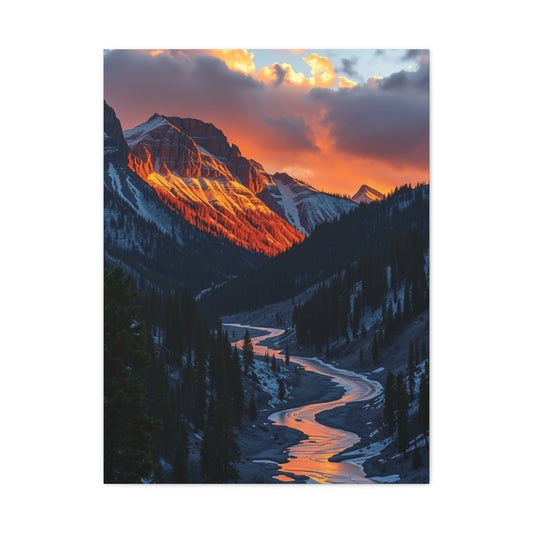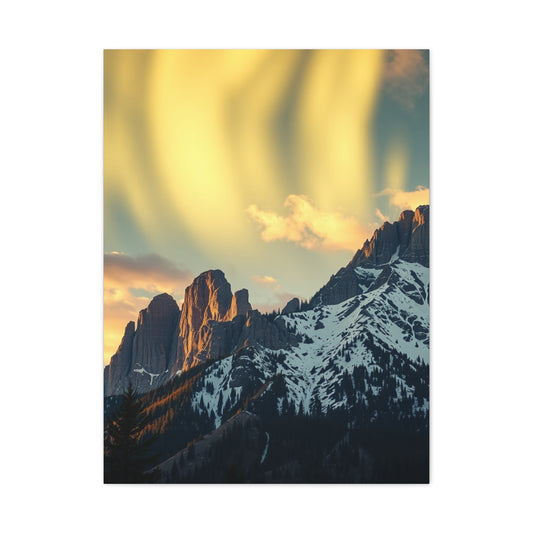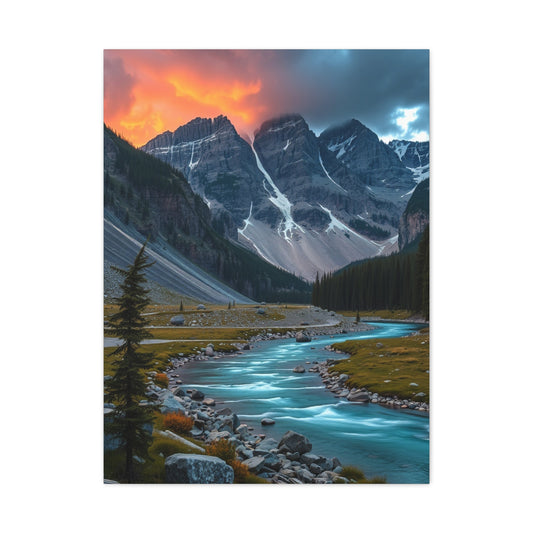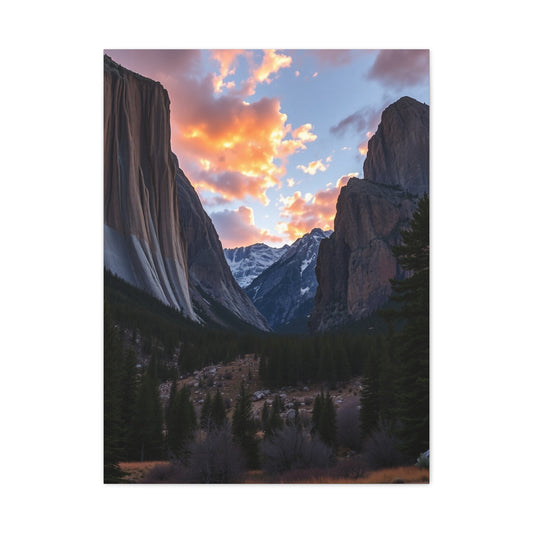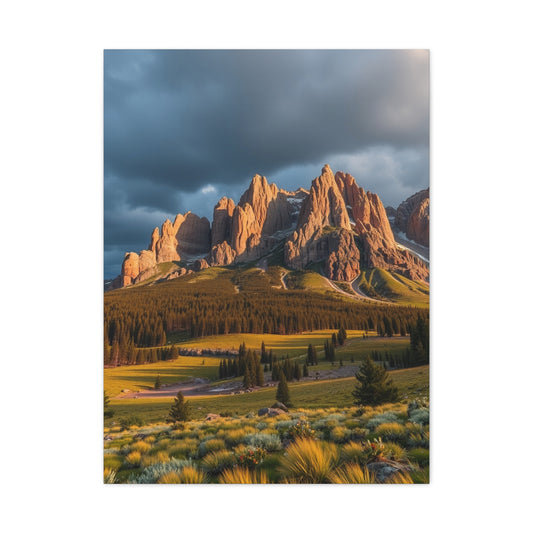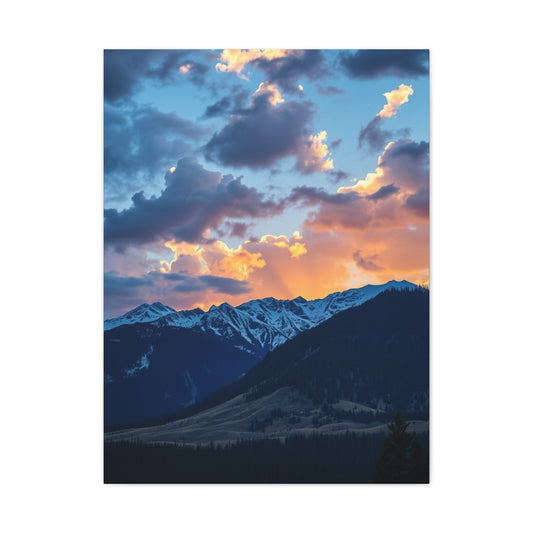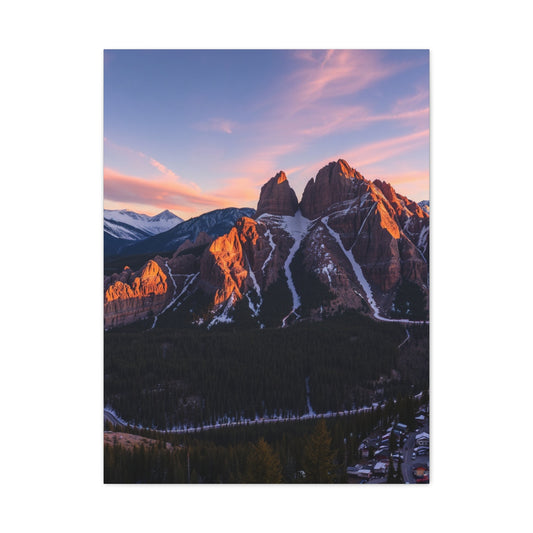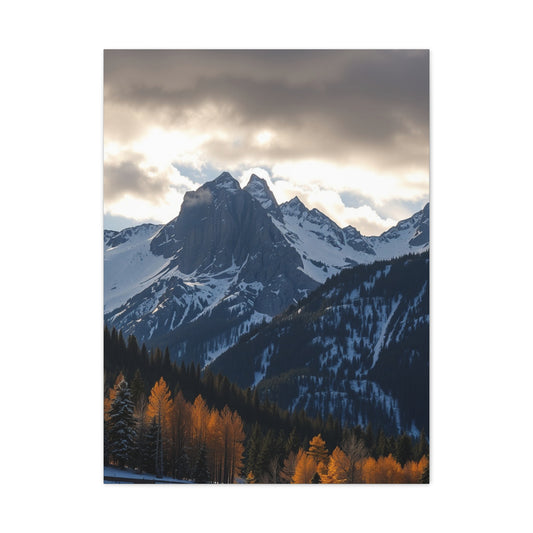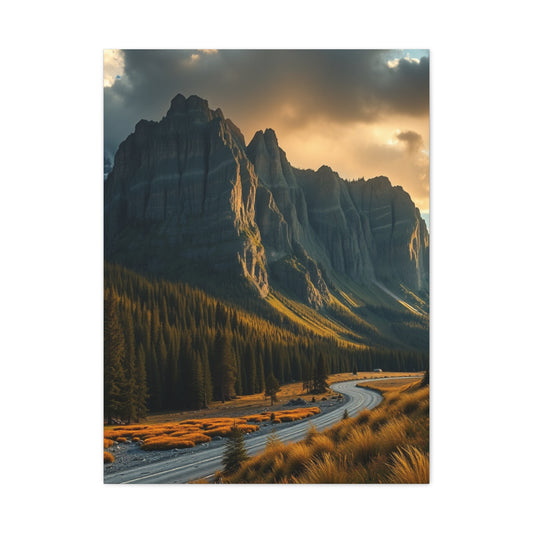Colorado Landscape Wall Art: Transforming Your Space with Rocky Mountain Magnificence
Colorado's breathtaking terrain offers an unparalleled canvas for capturing nature's most spectacular moments through photography. The state's diverse ecosystems, ranging from snow-capped peaks to golden aspen groves, provide endless inspiration for creating stunning wall art that brings the outdoors inside. Whether you're seeking to enhance your home's ambiance or add character to commercial spaces, Colorado landscape photography delivers an authentic connection to one of America's most cherished natural environments.
The allure of mountain photography extends far beyond mere decoration. These carefully captured moments represent a profound relationship between artist and environment, where patience, skill, and timing converge to immortalize fleeting instances of natural beauty. Each photograph tells a story of exploration, dedication, and reverence for the wilderness that defines Colorado's identity.
Understanding the Essence of Rocky Mountain Photography
The Rocky Mountain region presents unique challenges and rewards for photographers dedicated to capturing its essence. Colorado's elevation changes create dramatic lighting conditions that shift throughout the day, offering photographers countless opportunities to document the interplay between light and landscape. From the first rays of dawn illuminating distant peaks to the warm glow of sunset casting long shadows across alpine meadows, each moment presents a distinct visual narrative.
Professional landscape photographers understand that successful mountain photography requires more than technical expertise. It demands an intimate knowledge of weather patterns, seasonal changes, and the subtle nuances that make each location special. The ability to anticipate these natural phenomena separates exceptional landscape photography from ordinary snapshots, resulting in wall art that resonates with viewers on an emotional level.
The diversity of Colorado's terrain ensures that photographers can explore multiple ecosystems within relatively short distances. High alpine environments offer stark, dramatic compositions featuring rugged peaks and pristine snowfields. Lower elevation forests provide intimate scenes of aspen groves, wildflower meadows, and rushing streams. Desert regions contribute warm earth tones and unique geological formations that add variety to any collection.
Weather patterns in Colorado create constantly changing conditions that keep photographers engaged and challenged. Sudden storms can transform peaceful valleys into dramatic spectacles of light and shadow. Morning fog often shrouds valleys in mystery, while afternoon thunderstorms produce spectacular cloud formations that frame mountain peaks in dramatic fashion. These dynamic conditions ensure that no two visits to the same location yield identical results.
Seasonal Transformations in Colorado Landscapes
Spring arrives gradually in the Colorado mountains, beginning in the lower elevations and slowly climbing toward the peaks. This extended season provides photographers with weeks of changing conditions as winter's grip loosens and life returns to the high country. Early spring brings rushing waterfalls fed by snowmelt, while later in the season, wildflowers begin their spectacular display across alpine meadows.
The transition from winter to spring creates unique photographic opportunities as snow patches retreat, revealing the underlying landscape in stages. Photographers can capture the dramatic contrast between lingering snow and emerging vegetation, creating compositions that speak to nature's resilience and renewal. These transitional moments often produce the most compelling images, as they represent the dynamic nature of mountain environments.
Summer in Colorado offers photographers extended daylight hours and access to high-altitude locations that remain snowbound during colder months. Alpine lakes reflect towering peaks in mirror-like surfaces, while wildflower displays reach their peak across subalpine meadows. The intense ultraviolet radiation at high elevation creates unique lighting conditions that enhance color saturation and contrast in properly exposed photographs.
Thunderstorm season brings dramatic weather patterns that can transform peaceful mountain scenes into powerful displays of nature's energy. Photographers who understand these patterns can position themselves safely to capture lightning strikes, dramatic cloud formations, and the interplay between storm and sunshine that creates some of the most memorable mountain photography.
Autumn represents perhaps the most celebrated season for Colorado landscape photography. The state's extensive aspen forests transform into golden galleries that attract photographers from around the world. The timing of peak color varies by elevation and location, extending the autumn photography season from early September through late October in most areas.
The contrast between golden aspen leaves and dark evergreen forests creates natural compositions that require minimal manipulation to produce striking wall art. These scenes capture the essence of Colorado's changing seasons while providing warm, inviting colors that complement a wide range of interior design schemes.
Winter photography in Colorado presents unique challenges and rewards. Snow-covered landscapes offer simplified compositions that emphasize form, texture, and the interplay between light and shadow. Frozen waterfalls, snow-laden trees, and pristine mountain peaks create monochromatic scenes that translate beautifully to black and white photography or subtle color palettes.
Exploring Colorado's Iconic Photographic Regions
The San Juan Mountains in southwestern Colorado represent one of the state's most photographed regions, offering a concentration of fourteeners and dramatic alpine scenery within a relatively compact area. These ancient volcanic peaks provide photographers with endless opportunities to capture rugged mountain landscapes characterized by steep ridges, deep valleys, and colorful rock formations.
The Cimarron Range, a subset of the San Juan Mountains, features some of Colorado's most distinctive peaks. Courthouse Mountain's pyramid-shaped profile creates instantly recognizable silhouettes that work well as focal points in landscape compositions. The surrounding valleys offer vantage points that allow photographers to capture these peaks in various lighting conditions throughout the day.
Storm King Peak and The Castle represent two of the most photographed summits in the Cimarron Range. Their proximity to each other creates opportunities for compositions that include both peaks, while their distinct profiles allow for compelling single-mountain studies. The changing weather patterns in this region often produce dramatic cloud formations that add interest to any composition.
The Elk Mountains, home to the famous Maroon Bells, provide another concentration of photographic opportunities. These peaks, reflected in Maroon Lake, create one of Colorado's most iconic scenes. However, the region offers much more than this single, well-known composition. Hidden valleys, alternative vantage points, and seasonal changes ensure that photographers can find fresh perspectives even in heavily photographed areas.
The Front Range, easily accessible from Colorado's major population centers, offers photographers convenient access to alpine environments. Rocky Mountain National Park protects much of this region, providing well-maintained trails that lead to countless photographic opportunities. The park's diverse ecosystems, from montane forests to alpine tundra, offer subjects suitable for photographers of all skill levels.
The Never Summer Mountains, located on the western edge of Rocky Mountain National Park, provide dramatic skylines visible from many vantage points within the park. These peaks create compelling backgrounds for compositions featuring wildlife, wildflowers, or forest scenes, demonstrating how landscape photography can incorporate multiple elements to create complex, layered images.
Capturing Mountain Landscapes
Successful mountain photography begins with understanding light and its behavior in high-altitude environments. The thin atmosphere at elevation allows more ultraviolet radiation to reach the sensor, potentially creating color casts that require careful white balance considerations. However, this same thin atmosphere also produces incredibly clear conditions that allow for sharp details even at great distances.
Golden hour photography in the mountains extends beyond the traditional hour before and after sunrise and sunset due to the complex topography. Mountains create their own lighting conditions as they block and reflect light throughout the day. Understanding how light moves across the landscape allows photographers to predict when specific peaks or valleys will receive optimal illumination.
Composition in mountain photography requires careful consideration of scale and perspective. The immense size of mountain landscapes can make it challenging to convey their grandeur in a two-dimensional image. Including foreground elements helps establish scale while creating depth that draws viewers into the scene. These elements might include rocks, trees, streams, or wildflowers that provide reference points for understanding the landscape's magnitude.
The rule of thirds applies to mountain photography, but photographers must adapt this guideline to work with the vertical nature of mountain landscapes. Placing prominent peaks along the upper third line often creates more dynamic compositions than centering them in the frame. Similarly, positioning horizon lines along the lower third line allows for more sky space to showcase dramatic cloud formations or subtle color gradations.
Leading lines play a crucial role in mountain landscape composition. Rivers, trails, ridgelines, and fence lines all serve as visual pathways that guide viewers' eyes through the image. These elements help create a sense of journey and exploration that mirrors the experience of actually being in the landscape.
Depth of field considerations in mountain photography balance the desire for overall sharpness with the need to isolate important elements. Hyperfocal distance focusing ensures maximum sharpness from foreground to background, while selective focus can draw attention to specific elements within complex compositions. Understanding these techniques allows photographers to make conscious choices about how they want viewers to experience their images.
Weather Patterns and Their Photographic Impact
Colorado's continental climate produces weather patterns that significantly impact photographic opportunities throughout the year. Understanding these patterns helps photographers plan shoots and anticipate conditions that produce the most compelling images. The state's position in the rain shadow of western mountain ranges creates relatively dry conditions, but local topography generates its own weather systems.
Morning conditions in Colorado mountains often feature calm winds and clear skies that gradually give way to afternoon thunderstorm development. This pattern provides photographers with predictable windows of opportunity for different types of images. Early morning shoots can capture serene, peaceful scenes with perfect reflections in alpine lakes, while afternoon sessions might focus on dramatic cloud formations and storm development.
Temperature inversions frequently occur in Colorado valleys, creating atmospheric conditions that add mystery and drama to landscape photographs. These inversions trap fog and clouds in valleys while leaving peaks clearly visible above, creating layered compositions that separate foreground, middle ground, and background elements naturally.
Chinook winds, common along Colorado's Front Range, can rapidly change weather conditions and create unique photographic opportunities. These warm, dry winds can clear snow from peaks within hours, revealing underlying rock formations and creating stark contrasts between snow-covered and bare terrain.
Seasonal weather patterns influence not only what subjects are accessible but also how they appear in photographs. Spring snowstorms often create temporary conditions that combine elements from multiple seasons in single compositions. Fresh snow on newly leafed aspen trees or wildflower meadows creates unusual scenes that capture the dynamic nature of mountain weather.
Altitude sickness considerations become important for photographers working at high elevations. Understanding personal limitations and planning accordingly ensures that photographers can work safely while maintaining the focus needed for technical precision. Proper preparation includes gradual acclimatization, adequate hydration, and recognition of symptoms that indicate the need to descend.
Color Theory in Mountain Landscape Photography
Colorado's natural color palette provides photographers with an extensive range of hues that work harmoniously in wall art applications. The warm golds and oranges of aspen forests complement the cool blues and purples of distant mountain ridges, creating natural color combinations that translate well to interior design applications.
Understanding color temperature throughout the day helps photographers capture the full emotional range available in mountain landscapes. The warm light of sunrise and sunset bathes landscapes in golden tones that create welcoming, comfortable atmospheres in residential and commercial spaces. The cooler light of midday produces crisp, clean images that work well in contemporary settings.
Seasonal color changes provide photographers with multiple interpretations of the same locations. Spring's subtle greens and browns contrast dramatically with autumn's brilliant golds and reds, while winter's monochromatic palette offers sophisticated options for minimalist design schemes. This seasonal variety ensures that collectors can find images that match their specific aesthetic preferences.
Color saturation in mountain photography requires careful balance between natural appearance and visual impact. Over-saturation can make images appear artificial and reduce their longevity as wall art, while under-saturation may fail to capture the emotional impact of experiencing these landscapes firsthand. Successful mountain photographers develop a consistent approach to color processing that enhances natural beauty without compromising authenticity.
Complementary color relationships occur naturally in many Colorado landscape scenes. The warm tones of sandstone formations complement the cool blues of mountain skies, while the gold of autumn aspen leaves provides natural contrast to evergreen forests. Understanding these relationships helps photographers compose images that feel balanced and visually satisfying.
Wildlife Integration in Landscape Photography
Colorado's diverse wildlife populations provide opportunities to create landscape photographs that include living elements within expansive natural settings. These images combine the grandeur of mountain landscapes with the intimate connection that wildlife brings to any composition. The key to successful wildlife landscape photography lies in patience and understanding animal behavior patterns.
Elk herds moving across mountain meadows create dynamic elements that add life and movement to landscape compositions. These magnificent animals often appear during dawn and dusk periods when lighting conditions are optimal for photography. Their presence helps establish scale while adding narrative elements that engage viewers on multiple levels.
Mountain goats inhabiting Colorado's highest peaks provide subjects for dramatic wildlife landscape photography. Their ability to navigate seemingly impossible terrain creates opportunities for compositions that showcase both animal adaptation and mountain grandeur. These images often work particularly well as wall art because they capture the wild, untamed nature that many people associate with mountain environments.
Bird photography in mountain settings presents unique challenges due to the vast scale of these environments. However, raptors soaring against mountain backdrops create powerful images that combine freedom and majesty in ways that resonate strongly with viewers. These photographs work particularly well in spaces where inspiration and motivation are valued.
Seasonal wildlife behavior patterns influence when and where photographers can expect to encounter different species. Understanding migration routes, breeding seasons, and feeding patterns helps photographers position themselves for successful wildlife landscape photography. This knowledge also contributes to ethical wildlife photography practices that minimize disturbance to natural behaviors.
Historical Context and Cultural Significance
Colorado's landscape photography tradition extends back to the earliest days of western exploration and settlement. Pioneer photographers documented the territory's natural wonders using primitive equipment and dangerous transportation methods, establishing a visual record that continues to inspire contemporary artists. Their work provides historical context that enriches modern interpretations of these same landscapes.
The cultural significance of Colorado's mountains extends beyond their visual appeal to encompass their role in western American identity and values. These landscapes represent concepts of freedom, adventure, and connection to nature that resonate strongly with contemporary audiences. Wall art featuring Colorado landscapes taps into these deeper cultural associations while providing aesthetic benefits.
Indigenous peoples inhabited Colorado's mountains for thousands of years before European settlement, developing intimate relationships with these landscapes that influenced their cultural and spiritual practices. Understanding this history adds depth to contemporary landscape photography by acknowledging the long human connection to these environments.
The mining era left its mark on Colorado's landscape in ways that add historical interest to contemporary photography. Abandoned structures, altered terrain, and remnant infrastructure provide subjects that combine natural beauty with human history. These elements add narrative depth to landscape photography while documenting an important chapter in Colorado's development.
Conservation efforts have preserved much of Colorado's most spectacular scenery for future generations while providing photographers with protected environments for their work. National parks, wilderness areas, and state parks ensure that these landscapes remain available for artistic interpretation while maintaining their natural character.
Print Media Considerations for Wall Art
The transition from digital capture to physical wall art requires careful consideration of print media characteristics and their interaction with mountain landscape imagery. Different substrates affect how colors reproduce, how details render, and how images appear under various lighting conditions. Understanding these relationships helps ensure that the final wall art accurately represents the photographer's artistic vision.
Traditional photographic prints on archival papers provide the most faithful color reproduction and finest detail resolution. These prints work particularly well for mountain landscapes because they can accurately reproduce the subtle tonal gradations that characterize natural lighting conditions. The matte and luster surface options each offer distinct advantages depending on viewing conditions and personal preferences.
Canvas prints offer texture and presence that complement the rugged nature of mountain landscapes. The fabric texture adds visual interest while reducing glare, making canvas prints suitable for locations with challenging lighting conditions. However, canvas printing requires careful attention to image preparation to ensure that important details aren't lost in the texture of the substrate.
Metal prints provide contemporary presentation options that work particularly well with high-contrast mountain scenes. The reflective surface of aluminum substrates enhances color saturation and creates depth that can make images appear almost three-dimensional. These prints resist fading and moisture damage, making them suitable for commercial applications where durability is important.
Acrylic mounting creates a modern, sophisticated presentation that works well in contemporary settings. The clear acrylic substrate adds depth while protecting the underlying print from environmental factors. This mounting option works particularly well with mountain landscapes that feature strong geometric elements or dramatic lighting conditions.
Size considerations for mountain landscape wall art depend on both the viewing distance and the intended impact. Larger prints allow viewers to experience the grandeur of mountain landscapes more fully, while smaller prints work well in intimate settings where detailed examination is possible. Understanding the relationship between image resolution, print size, and viewing distance ensures optimal results.
Framing and Presentation Methods
Professional presentation enhances the impact of mountain landscape photography while protecting valuable prints from environmental damage. Frame selection should complement both the image content and the intended display environment, creating harmony between artwork and space without overwhelming either element.
Traditional wooden frames work well with mountain landscapes because they echo the natural materials found in these environments. Different wood tones and textures can enhance specific color palettes within the photographs. Darker woods complement images with warm tones, while lighter woods work well with cooler mountain scenes featuring snow and sky.
Metal frames provide contemporary presentation options that suit modern interior design schemes. Brushed aluminum and stainless steel frames complement the crisp, clean lines often found in mountain photography while providing neutral borders that don't compete with image content. These frames work particularly well in commercial and office environments.
Matting considerations affect both the visual presentation and preservation of mountain landscape prints. Acid-free materials prevent chemical migration that could damage prints over time, while proper mat dimensions create visual breathing space around images. The mat color should complement the image without overwhelming subtle tones or competing with dominant colors.
Conservation glazing protects prints from ultraviolet radiation, moisture, and atmospheric pollutants while maintaining optical clarity. Museum-quality glazing options filter harmful UV radiation while providing anti-reflective properties that improve viewing under various lighting conditions. These considerations become particularly important for valuable prints displayed in high-traffic areas or locations with significant natural light exposure.
Custom framing allows for creative presentation options that enhance the storytelling aspect of mountain landscape photography. Multiple images can be combined in single frames to show seasonal progressions, time-lapse sequences, or different perspectives of the same location. These presentation methods add narrative depth while creating focal points that command attention.
Interior Design Integration Strategies
Incorporating Colorado landscape wall art into interior design schemes requires understanding how these images interact with existing colors, textures, and spatial relationships. Mountain photography typically features natural color palettes that complement a wide range of design styles, from rustic cabin environments to contemporary urban spaces.
Scale relationships between artwork and surrounding furnishings significantly impact the overall aesthetic success of any installation. Large-format mountain landscapes work well as statement pieces in spacious rooms with high ceilings, while smaller prints can create intimate focal points in more confined spaces. Understanding these relationships helps ensure that artwork enhances rather than overwhelms its environment.
Lighting considerations extend beyond simple illumination to encompass the creation of mood and atmosphere that complements the natural beauty captured in mountain landscapes. Directional lighting can enhance texture and depth within photographs, while ambient lighting creates comfortable viewing conditions that encourage extended appreciation of fine details.
Color coordination between mountain landscape wall art and surrounding design elements requires subtle approach that avoids heavy-handed matching. The natural earth tones found in most mountain photography provide excellent foundation colors that work with various accent schemes. These images often contain enough color variety to complement multiple design directions within the same space.
Grouping strategies for multiple mountain landscape pieces can create gallery walls that tell comprehensive stories about Colorado's diverse environments. Arranging images by season, region, or color palette creates cohesive presentations that maintain viewer interest while avoiding visual chaos. These installations work particularly well in lobbies, hallways, and other transitional spaces.
Photography Collection Development
Building comprehensive collections of Colorado mountain landscape photography requires strategic planning and consistent artistic vision. Successful collections balance variety with coherence, offering viewers multiple perspectives on familiar themes while maintaining recognizable style characteristics that unify the body of work.
Regional focus allows photographers to develop deep familiarity with specific areas while creating collections that thoroughly explore particular environments. This approach produces bodies of work that demonstrate intimate knowledge of local conditions, seasonal patterns, and hidden photographic opportunities that casual visitors might overlook.
Seasonal documentation creates collections that showcase the dynamic nature of mountain environments throughout the year. These comprehensive approaches require multiple visits to the same locations under different conditions, producing series that demonstrate how natural factors influence the appearance and mood of familiar landscapes.
Technical consistency across collections helps ensure that individual images work well together as unified presentations. This includes maintaining similar approaches to color processing, contrast handling, and compositional principles that create recognizable style characteristics. However, technical consistency shouldn't limit creative exploration within established parameters.
Thematic organization helps viewers understand the photographer's artistic intentions while providing frameworks for selecting images for specific applications. Collections might focus on specific subjects like waterfalls, peaks, or forests, or explore broader themes like seasons, weather, or times of day. These organizational approaches help potential customers find images that suit their particular needs and preferences.
Print Quality and Archival Considerations
Archival quality in mountain landscape prints ensures that these investments maintain their beauty and value over extended periods. Understanding the factors that affect print longevity helps photographers and customers make informed decisions about materials, processing, and display conditions that preserve image quality.
Paper selection significantly impacts both the appearance and longevity of mountain landscape prints. Archival papers manufactured using acid-free processes resist yellowing and deterioration over time. The surface characteristics of different papers affect how images appear under various lighting conditions, with some surfaces enhancing detail rendering while others provide more forgiving viewing characteristics.
Ink systems used in professional printing affect both color accuracy and fade resistance. Pigment-based inks generally provide superior longevity compared to dye-based systems, though both require proper handling and display conditions to achieve their maximum lifespan. Understanding these differences helps ensure that investment in mountain landscape wall art provides lasting enjoyment.
Environmental factors in display locations significantly affect print longevity regardless of materials used in their creation. Direct sunlight, high humidity, extreme temperatures, and atmospheric pollutants all contribute to print degradation over time. Proper placement and environmental control help maximize the lifespan of valuable mountain landscape photography.
Professional printing services specializing in fine art reproduction understand the specific requirements for mountain landscape imagery. These specialists can recommend appropriate paper and ink combinations while providing color management services that ensure accurate reproduction of the photographer's artistic vision. Their expertise becomes particularly valuable for large-format prints where technical precision is critical.
Geographic Diversity Within Colorado
Northern Colorado's landscape photography opportunities center around Rocky Mountain National Park and the surrounding Front Range peaks. This region offers easily accessible mountain photography locations within short distances of major population centers. The park's well-maintained trail system provides access to alpine lakes, waterfalls, and dramatic mountain vistas suitable for photographers of all skill levels.
The Never Summer Mountains, visible from many locations within Rocky Mountain National Park, provide distinctive skyline views that work well as background elements in complex compositions. These peaks create compelling silhouettes during sunrise and sunset periods while maintaining visual interest throughout the day due to their varied profiles and elevation changes.
Cache la Poudre Canyon offers intimate landscape photography opportunities featuring rushing water, rock formations, and forest scenes. This area provides alternatives to the grand mountain vistas for photographers interested in more detailed, close-up interpretations of mountain environments. The canyon's accessibility makes it popular for both casual and serious photographers.
Central Colorado encompasses some of the state's most iconic photography destinations, including the Maroon Bells, Mount Elbert, and the Sawatch Range. This region offers the highest concentration of fourteeners in Colorado, providing numerous opportunities for dramatic mountain photography. The diverse geology creates varied compositions within relatively small geographic areas.
The Collegiate Peaks, named after prestigious universities, provide a concentration of high peaks that create dramatic skylines visible from multiple vantage points throughout central Colorado. These mountains offer photographers opportunities to capture classic alpine scenes while exploring less crowded alternatives to more famous locations.
Southwestern Colorado features the San Juan Mountains, often considered the most spectacular mountain range in the state. The volcanic origins of these peaks create unique geological formations and color variations that distinguish them from other Colorado ranges. The region's mining history adds cultural elements that enhance the storytelling potential of landscape photography.
The Black Canyon of the Gunnison represents a unique landscape photography opportunity within Colorado's diverse terrain. The dark walls of this narrow canyon create dramatic compositions characterized by strong vertical lines and intense shadows. These images provide striking alternatives to traditional mountain photography while maintaining connection to Colorado's natural heritage.
Southeastern Colorado offers high plains landscapes that provide context for understanding the state's mountain regions. These vast grasslands and rolling hills create compositions that emphasize the dramatic elevation changes that define Colorado's geography. Including these landscapes in comprehensive collections helps tell the complete story of Colorado's diverse terrain.
Aspects of Mountain Photography
Exposure considerations in mountain photography require understanding how extreme contrast ranges affect digital sensors and film emulsions. The bright reflection from snow-covered peaks combined with deep shadows in valleys creates challenging conditions that test the dynamic range capabilities of any camera system. Graduated neutral density filters help balance these extreme differences while maintaining natural appearance.
Focus stacking techniques become valuable when mountain compositions include detailed foreground elements that require maximum sharpness throughout the frame. This technique involves capturing multiple images at different focus distances and combining them in post-processing to achieve greater depth of field than possible with single exposures. The technique works particularly well with wildflower and rock detail foregrounds.
Polarizing filters provide essential tools for mountain photography by reducing reflections from water surfaces and wet rocks while enhancing contrast in sky areas. However, at high altitudes, polarizers can create uneven sky effects when used with wide-angle lenses, requiring careful attention to filter positioning and potential post-processing correction.
High altitude considerations affect both equipment performance and photographer comfort during extended shooting sessions. Lower atmospheric pressure can affect sealed equipment, while extreme temperature variations stress electronic components and battery performance. Understanding these factors helps ensure reliable equipment performance during critical shooting opportunities.
Wind presents constant challenges for mountain photographers, particularly during storm formation and passage. Stable tripod systems and proper technique help minimize camera movement during longer exposures, while understanding wind patterns helps photographers anticipate and prepare for changing conditions that might affect equipment stability.
Hyperfocal distance calculations become particularly important in mountain photography where maximum depth of field is often desired. Understanding how aperture settings, focal length, and focusing distance interact helps photographers achieve optimal sharpness throughout their compositions while maintaining adequate shutter speeds for handheld shooting when necessary.
Market Trends and Consumer Preferences
Contemporary wall art markets show increasing demand for authentic, locally-sourced artwork that reflects regional character and natural beauty. Colorado landscape photography satisfies this demand while providing options suitable for various budget levels and display requirements. The growing appreciation for handcrafted, original artwork supports sustainable markets for mountain landscape photography.
Size preferences in wall art continue trending toward larger formats that create stronger visual impact and better utilize available wall space in contemporary homes and commercial buildings. This trend favors mountain landscape photography because these subjects maintain their visual impact when reproduced at large scales, unlike more detailed subjects that might become overwhelming.
Color palette preferences reflect broader design trends toward natural, earth-based color schemes that create calming, comfortable environments. Mountain landscape photography naturally provides these color relationships while offering enough variety to complement evolving design preferences. The timeless nature of natural colors ensures long-term relevance for these artistic investments.
Authenticity concerns drive consumer preferences toward original photography rather than mass-produced reproductions or digitally manipulated images. Buyers increasingly value the story behind artwork and seek pieces that represent genuine artistic vision and technical skill. Mountain landscape photography satisfies these preferences while providing visual documentation of real places and experiences.
Customization options allow customers to adapt mountain landscape photography to specific requirements while maintaining artistic integrity. Print sizes, framing options, and substrate choices provide flexibility without compromising the fundamental character of the artwork. This adaptability makes mountain landscape photography suitable for diverse applications and customer preferences.
Seasonal Photography Planning
Spring photography planning in Colorado requires understanding snowmelt patterns and their effect on accessibility to different locations. Lower elevation areas become available first, while high alpine locations may remain snow-covered well into summer. This progression provides opportunities to document the gradual awakening of mountain environments as life returns to previously frozen landscapes.
Wildflower seasons vary significantly by elevation and location throughout Colorado, requiring careful research and flexible scheduling to capture peak displays. Lower elevation flowers typically bloom first, followed by a progression up the mountainsides that can extend the flowering season from early spring through late summer in the highest locations.
Summer planning focuses on accessing high-altitude locations that remain closed during other seasons while managing afternoon thunderstorm patterns that can create dangerous conditions. Early morning starts allow photographers to reach exposed locations before storm development while capturing optimal lighting conditions during the golden hour periods.
Autumn photography planning requires understanding aspen phenology and the factors that influence peak color timing. Temperature patterns, moisture levels, and elevation all affect when aspen leaves reach their maximum color saturation. Successful autumn photography often involves monitoring conditions across multiple locations and remaining flexible with travel plans.
Winter photography planning must account for equipment performance in extreme conditions, avalanche safety, and limited daylight hours. However, winter conditions also provide unique photographic opportunities including snow-covered landscapes, frozen waterfalls, and dramatic storm conditions that create compelling wall art subjects.
Final Thoughts:
Colorado landscape wall art offers far more than scenic decoration—it provides an immersive connection to one of the most inspiring natural environments in the world. Each photograph captures not just a view, but a moment in time where light, weather, and terrain converge in harmony. These images invite us to slow down, reflect, and bring the grandeur of the Rocky Mountains into our daily lives.
What makes Colorado’s landscapes so compelling as wall art is their versatility. Snow-capped peaks add a sense of strength and permanence, golden autumn aspens infuse warmth and optimism, and alpine meadows bursting with wildflowers radiate renewal and joy. Whether displayed in a home, office, or public space, these works of art create atmospheres that inspire relaxation, creativity, and a deeper appreciation for the natural world.
Beyond their aesthetic appeal, Colorado landscape photographs embody stories of patience, exploration, and reverence for nature. They remind us of the state’s cultural heritage, its history of exploration, and its enduring role as a symbol of adventure and freedom. For viewers with personal ties to the region, these images often spark memory and nostalgia, deepening their emotional impact.
As interior design trends continue to emphasize authenticity, natural textures, and meaningful connections to place, Colorado wall art stands out as both timeless and adaptable. Whether you prefer bold, large-scale prints that serve as statement pieces or subtle compositions that complement minimalist spaces, the diversity of Colorado’s terrain ensures a perfect match for any style.
Ultimately, investing in Colorado landscape wall art is more than choosing a piece of décor—it is choosing to live daily with the beauty, power, and serenity of the Rocky Mountains. It transforms walls into windows, allowing every glance to become a journey into nature’s magnificence. In this way, Colorado’s landscapes don’t just adorn our spaces—they elevate them.

